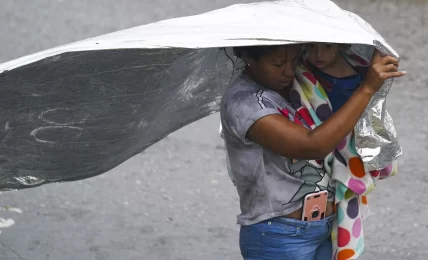We sadly live in a society where it’s all too common for criminals to want to take what we’ve worked hard to get. The results of a break-in are traumatic, too. Beyond just losing your stuff. Victims often feel violated, anxious, and unsafe, sometimes for years after the event.
Prevention is the best way to stay safe. And, while you shouldn’t have to turn your home into a fortress, that’s the stark reality of our world. But you can take plenty of simple steps to deter burglars and ensure your home is less attractive to would-be thieves.
1. Lock Up Tight
It’s a simple step, yet often overlooked: locking your doors, even when you’re home. Astonishingly, a significant portion of Americans neglect this basic security measure. In the Northwest, nearly half of the population leaves their doors unlocked. This habit extends to trusting neighborhoods, but remember, it only takes one opportunity for an intruder to take advantage.
2. Don’t Post Your Keys on Social Media
The joy of moving into a new home often leads to sharing key photos on social media. However, this innocent act can be risky. With today’s technology, burglars can replicate your keys from just a photograph. Be cautious about what you share online.
3. Avoid Bumper Stickers That Give Away Too Much Info
Adorning your vehicle with bumper stickers can inadvertently tip off burglars about your schedule or hobbies. For example, a bumper sticker indicating your child’s school can reveal when you’re likely away for drop-offs and pick-ups. Custom license plates and stickers showcasing expensive hobbies can also signal that valuable items may be inside your home.
4. Be Social Media Savvy
Many burglars exploit social media to find easy targets. Posting about vacations or outings in real time can alert opportunistic criminals that your house is vacant. Adjust your social media habits to share your experiences post-return to maintain privacy and security.
5. Use Blinds and Curtains
Visible empty homes are more likely to be targeted. Utilize blinds and curtains to obscure the view into your home, especially when you’re not around. Consistency in your window treatments can help give the illusion of presence.
6. Spare Key Strategy
Hiding your spare key in obvious places like under the mat or in a fake rock can be as risky as leaving your door open. Think creatively about hideaway spots or entrust a neighbor with your spare key.
7. Secure the Flap on Your Doggy Door
Doggy doors are convenient but can be an entry point for intruders. Opt for lockable pet doors to secure your home, especially at night or when you’re away.
8. Alarm Keypad Placement
Position your home’s alarm keypad away from windows and mirrors to prevent burglars from knowing whether your system is armed.
9. Discourage Doorstep Solicitors
Unattended flyers or door hangers can signal your absence. Display a ‘No Solicitation’ sign to reduce this risk.
10. Outsmart Porch Pirates
Leaving packages on your porch signals to burglars that you’re not home. Use discreet storage solutions for deliveries or schedule them for times when you’re likely to be home.
11. Don’t Let Mail and Newspapers Pile Up
An overflowing mailbox or uncollected newspapers are clear indicators of an empty home. Arrange for mail holds and newspaper stoppages during extended absences.
12. Use Smart Lighting
Gone are the days of leaving the lights on continuously. Utilize smart plugs and systems to control lights and electronics, mimicking your presence even when you’re away.
13. Reinforce Entry Points
Strengthen your doors with deadbolt locks, security strike plates, and reinforce the door frames. Smart locks add an extra layer of tech-savvy security. Remember, your door’s strength is a major deterrent to opportunistic thieves.
14. Upgrade Window Security
Installing window locks or security film can significantly increase the resistance of your windows against forced entry. In some high-risk areas, window bars might be a prudent addition.
15. Install Motion-Detector Lights
Motion-sensor lighting is a great way to scare off would-be burglars. Illuminate the dark corners of your property, especially near doors and windows.
16. Set Up Security Cameras
Visible surveillance cameras around your property can deter burglars and provide valuable evidence in case of a break-in. They’re a great tool for monitoring your home remotely.
17. Use Alarm System Signage
A simple yet effective trick – display signs or stickers indicating that your home is protected by a security system, even if you don’t have one. The suggestion alone can be a deterrent.
18. Landscape Maintenance
Keep bushes and trees trimmed to eliminate potential hiding spots for intruders. An open and visible yard is less attractive to those looking to break in unnoticed.
19. Secure Valuables in a Safe
A home safe is essential for protecting your most valuable items, especially when you’re not around. It’s an extra layer of security for your irreplaceable items.
20. Neighborhood Watch Participation
Being part of a neighborhood watch program can significantly enhance the security of your area. Collective vigilance is a powerful deterrent against crime.
21. Install Peephole or Doorbell Camera
Knowing who’s at the door before opening it is crucial. A peephole or a smart doorbell camera adds a layer of security and convenience.
22. Secure Your Wi-Fi Network
Your wireless network is a gateway to personal and financial information. Keep it secure with strong passwords and consider a firewall for additional security.
23. Conduct Regular Maintenance Checks
Regular inspections for signs of tampering or potential weaknesses are essential. This includes checking locks, latches, and any entry points for vulnerabilities.
24. Keep a Radio or TV on a Timer
Create the illusion of presence by setting a radio or TV on a timer to switch on at certain times. The noise can give the impression that someone is home, deterring potential intruders.
25. Use Smart Home Devices
Smart home devices like Wi-Fi-connected lights, thermostats, and cameras can be controlled remotely. They offer an excellent way to monitor your home and simulate occupancy even when you’re away.
26. Build a Trusted Community
Foster relationships with trusted neighbors who can keep an eye on your property when you’re not around. They can also help collect mail, newspapers, and packages, reducing signs of an empty home.
27. Keep Gardening Tools and Ladders Locked Away
Store ladders, gardening tools, and other objects that can be used to break into your home securely. Leaving these items unsecured outside can provide burglars with the means to gain entry.
28. Use Timer Switches for Lights
Invest in timer switches for your indoor lights. These devices can turn lights on and off in a pattern that mimics normal usage, making it appear as if someone is home.
29. Secure Your Garage
Ensure your garage, especially if it’s attached to your house, is secure. Lock all doors, including interior doors leading into the home, and consider adding a security system to the garage.
30. Consider a Professional Security Assessment
Hire a security professional to assess your home’s vulnerabilities. They can provide personalized recommendations to enhance your home’s security based on the latest trends and technologies.
31. Don’t Leave a Portable GPS in Plain Sight in the Car
Leaving your portable GPS visible in your car not only risks theft of the device but also poses a risk to your home security. Burglars can use the information to find your home address. It’s best to keep the GPS hidden or take it with you when leaving your car.
Katy Willis is a writer, lifelong homesteader, and master herbalist, master gardener, and canine nutritionist. Katy is a preparedness expert and modern homesteader practicing everyday preparedness, sustainability, and a holistic lifestyle.
She knows how important it is to be prepared for whatever life throws at you, because you just never know what’s coming. And preparedness helps you give your family the best chance to thrive in any situation.
Katy is passionate about living naturally, growing food, keeping livestock, foraging, and making and using herbal remedies. Katy is an experienced herbalist and a member of the CMA (Complementary Medical Association).
Her preparedness skills go beyond just being “ready”, she’s ready to survive the initial disaster, and thrive afterward, too. She grows 100% organic food on roughly 15 acres and raises goats, chickens, and ducks. She also lovingly tends her orchard, where she grows many different fruit trees. And, because she likes to know exactly what she’s feeding her family, she’s a seasoned from-scratch cook and gluten-free baker.
Katy teaches foraging and environmental education classes, too, including self-sufficient living, modern homesteading, seed saving, and organic vegetable gardening.
Katy helps others learn forgotten skills, including basic survival skills and self-reliance.
She’s been published on sites such as MSN, Angi, Home Advisor, Family Handyman, Wealth of Geeks, Readers Digest, and more.



